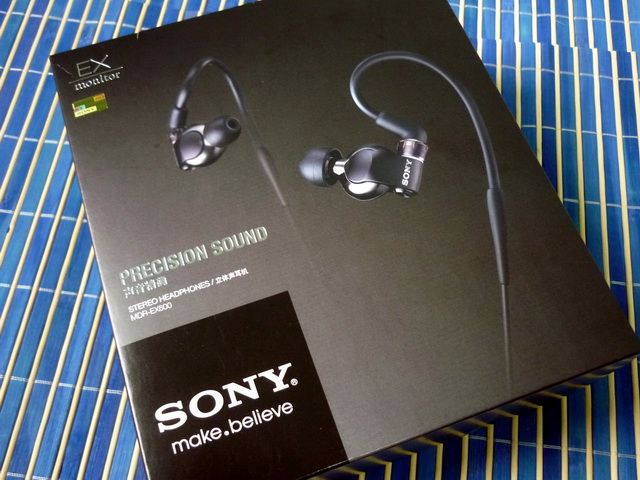
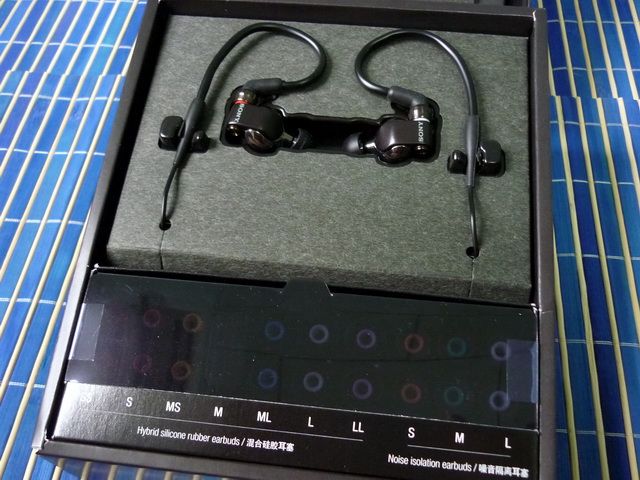
Spec
Driver: Closed, 16mm, dome type (CCAW Voice Coil) dynamic
Power: 200mW
Impedance: 32Ω at 1 kHz
Sensitivity: 107dB/mW
Frequency response: 4 – 28,000 Hz
Cord: 1.3m Y- type detachable.
Plug: Gold-plated L-shaped stereo mini plug.

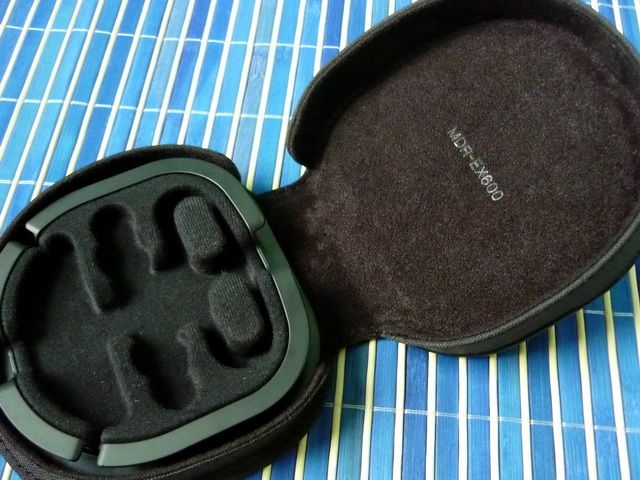
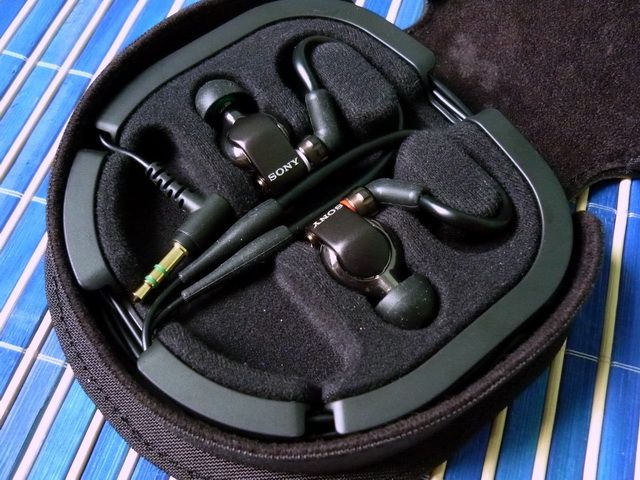
Packaging, Accessories and Build Quality
The EX600 comes in a heavy paper based box that is no unlike the EX700 packaging. The box looks nice but what is nicer are the accessories included. The IEM itself already comes with a 1.3m long detachable cable that can be replaced if broken (though aftermarket cable seems to be rare, if exists at all). There is also another shorter, 0.6m long cable, assuming it is designed for necklace type source such as a Bluetooth unit or small mp3 player. The selection of the infamous ‘hybrid’ eartips is excellent as well – 7 pairs of various sizes plus 3 more pair of foam-filled, making a total of 10 pairs. The hard case is well above average too, but a bit too big for day to day use and more suitable for long term storage.
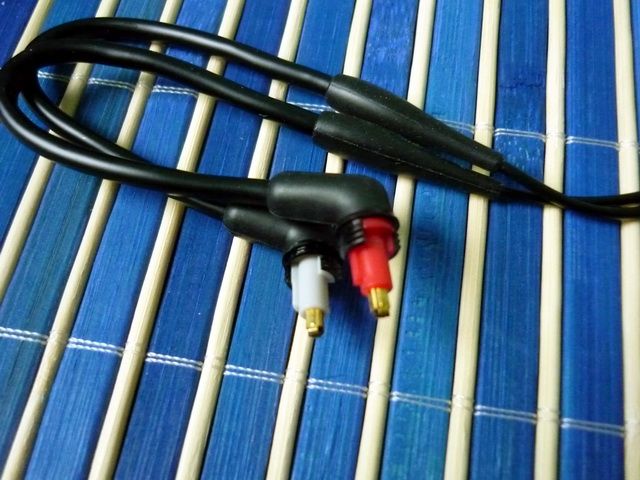
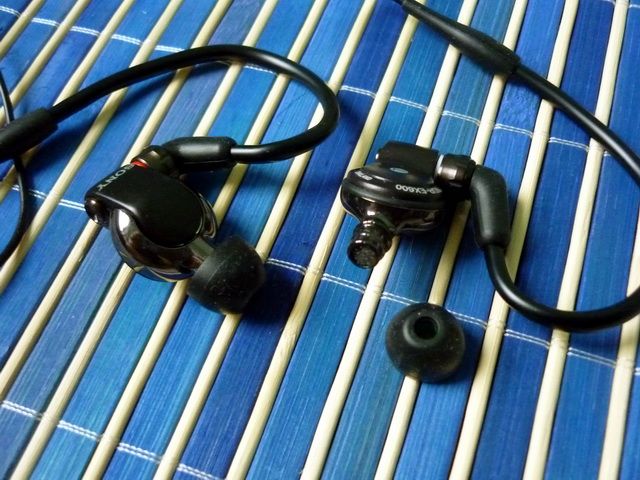
Build quality is overall top-notch as well. One credit I must give to Sony is the design of the detachable connector on the cable – the ‘cap’ is on the earpiece while the cable is ‘screwed’ into the earpiece, making a strong and fixed angle connection that really makes the kind of swing-able ‘snap-in’ design on Shure and new UE900 look positively fragile and irritating. Granted that the seal on EX600 isn’t very tight, I would think it is mainly an issue caused by the oversized earpiece’s design rather than the cable connector. Unlike the EX1000, which is made in Japan with a metal housing, EX600 is made in Thailand with a plastic housing. Even so, it doesn’t look cheap at all. The over-the-ear wearing style means cable noise isn’t a problem at all. However, isolation is only as good as a typical earbuds (which isn’t much). But on the positive side, it does have a really good soundstage as it sounds almost like an open-air design – but we will leave that discussion for the next section.
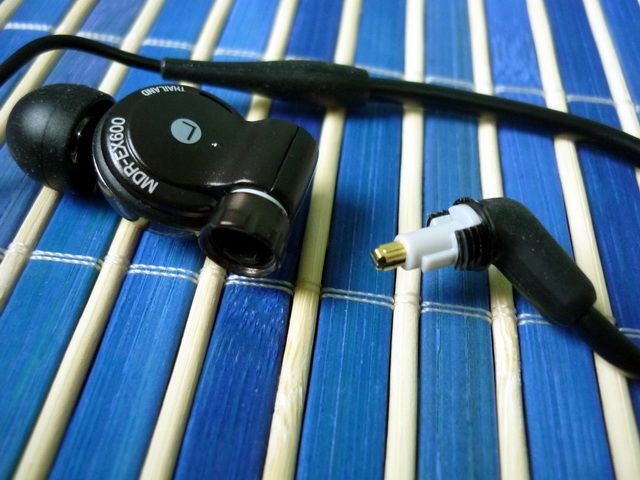
Sound Quality
A standard 50 hours burn-in was administered. Through it would seem quite a strong belief since the day of EX700 that most Sony would benefit from burn-in, I haven’t really detected any significant change in sound. I was once told that a 500 hours burn-in will cure EX700’s sibilant issue but I can confirm that is just wishful thinking. The good news, however, is that there isn’t that much sibilant that needed to be cured on the EX600, that I am rather grateful of.
Unlike the more V-shaped sounding EX700, the sound signature of EX600 is warm, laid back and specious. Bass extends the rather deep to the sub-bass region with good texture, but quantitatively only above neutral and not large by any mean. Similar observation can be said on the mid as well – good detail and texture but not particularly upfront or sweet. This gives a presentation that is well controlled and fairly neutral, but at the same time more laid back and specious. Up till now, the EX600 is doing really excellent. The trouble starts to appear when it reaches upper mid, where female vocal is - it is grainy, but luckily nothing near as edgy or sibilant as the EX700. Then it rolls off a bit too early on the top, missing some of the top-end sparkle beyond 15kHz. Despite these nuisances, the IEM still maintains a good balance in frequency response. The mid-to-bass performance is what winning the show. While upper-mid to treble isn’t exactly bad per se, those who pay attention mostly to female vocal or crispiness in violin and cymbal might not find the EX600 best of choice. On the good side – the lacking of isolation (which grants better openness) plus the overall laid back presentation gives the IEM a really good soundstage, even though the transparency is slightly hindered by the lack of air beyond 15kHz.
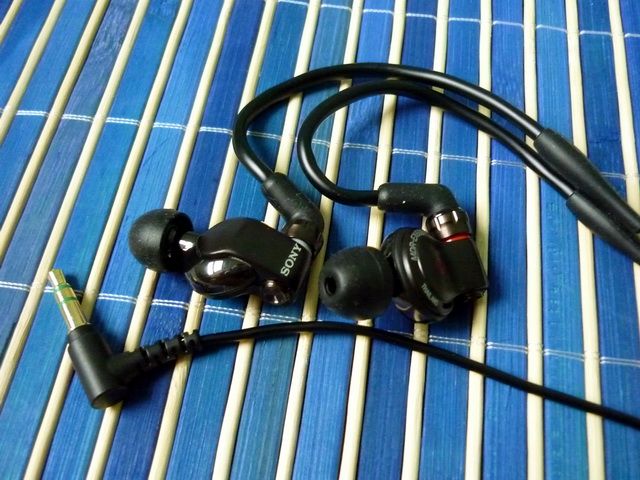
Verdict
Before getting the EX600, I had the chance to demo the EX1000. At the time, I wasn’t too impressed value wise. Don’t get me wrong, EX1000 sounds really good and better than EX600 - but the $500 price tag is a little too steep when compared to cheaper priced but similarly performing top-tier from other brands (Westone 4, just for an example). EX600 on the other hand is much more impressive. Granted it isn’t the best of the best you can buy in the $200 price range, the IEM still has good enough sound quality that almost stands up to EX1000. In another words, EX600 is pretty much the slightly scaled down, but better valued version of EX1000. It is unfortunately to see the top EX series of dynamic driver IEM getting replaced by the XBA series in the West, as EX600 is definitely one of the best valued IEM Sony has ever made and different enough to the balanced armature based XBA to deserve a stay. Hopefully we will see a return of the series in the future – but for those who are into the dynamic driver sound, this is a pair of Sony that worth picking up before it disappears completely.
For numeric rating, please visit The List.





